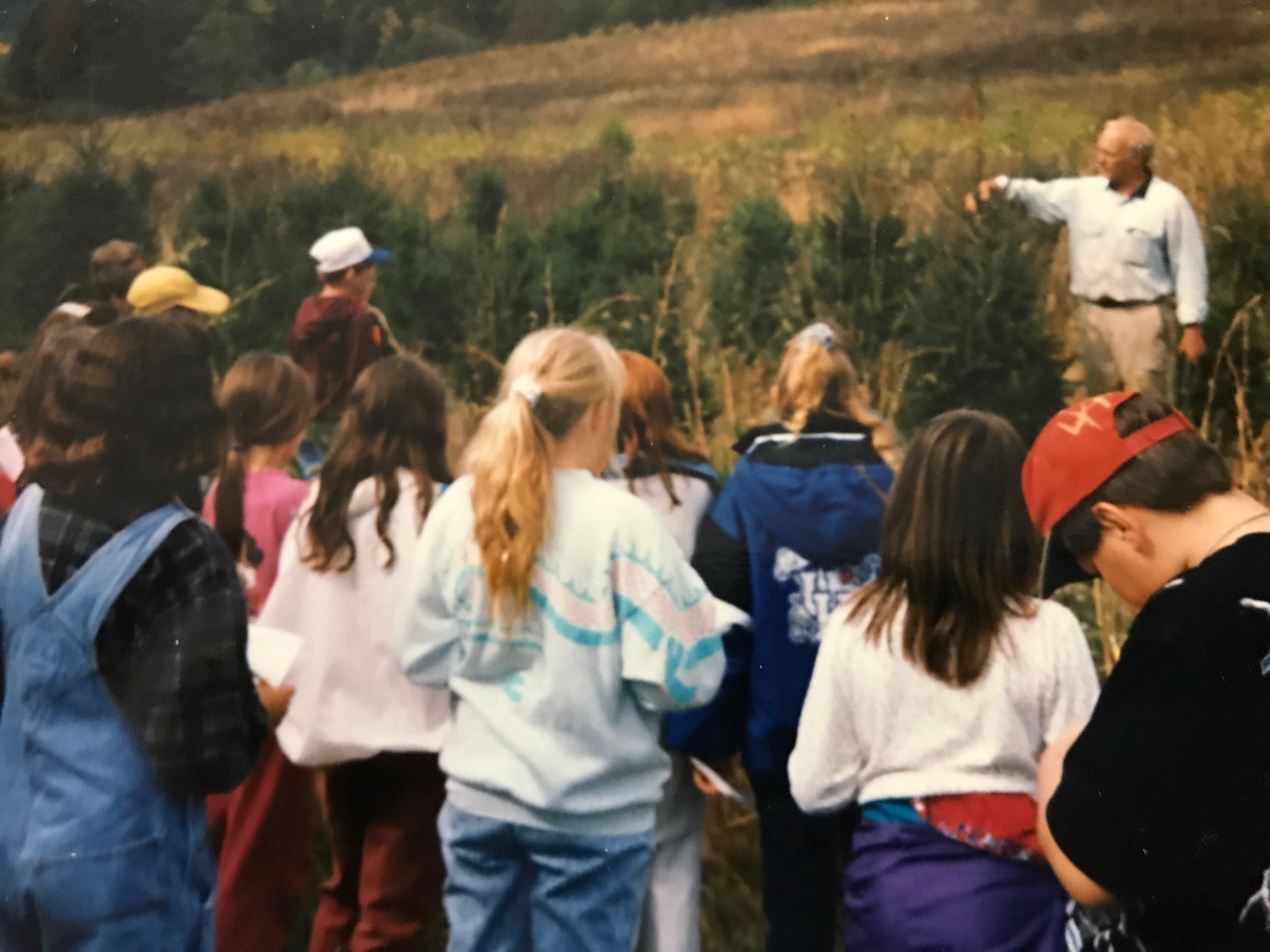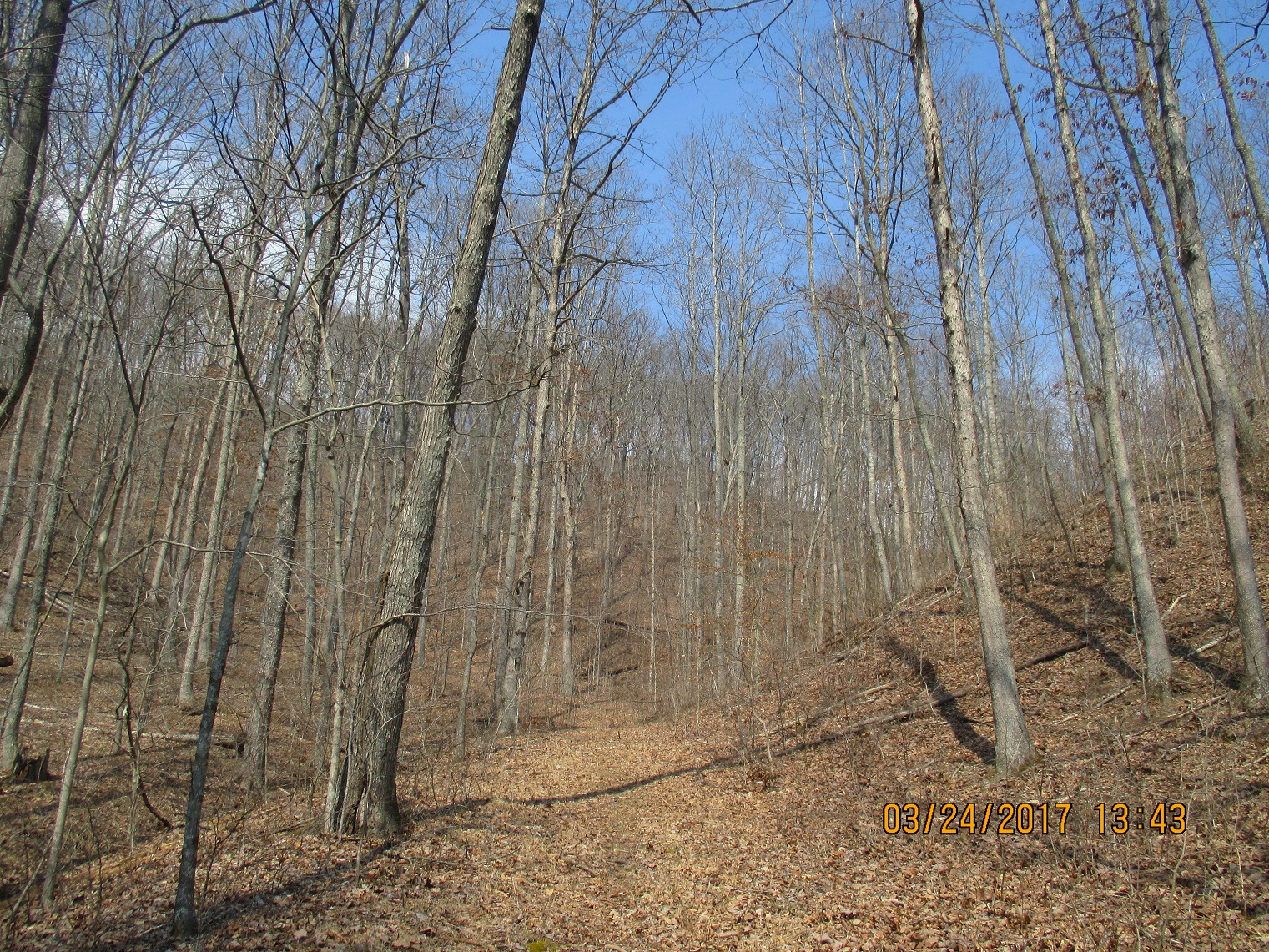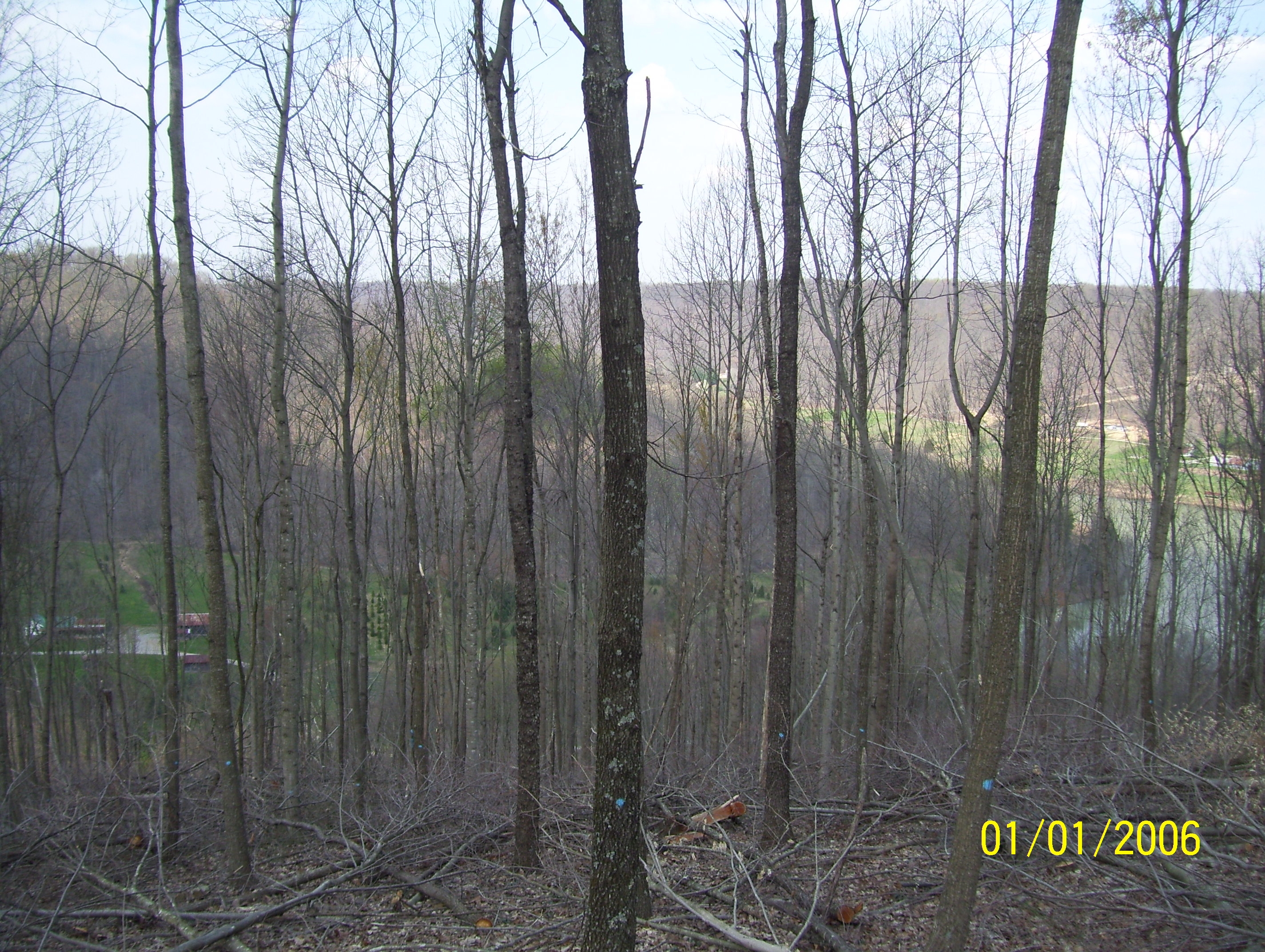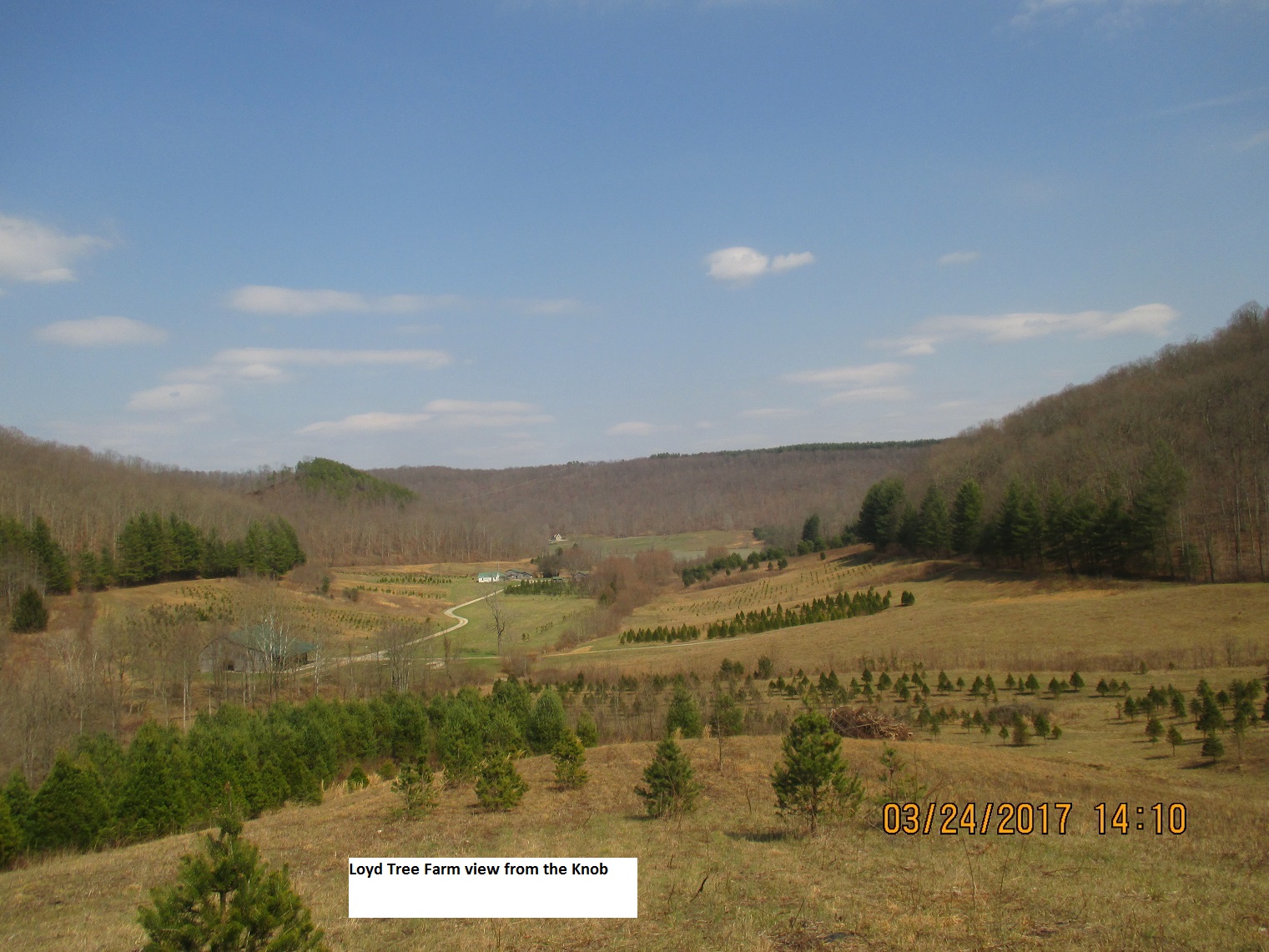North Central Nominee: Oliver Loyd from Kentucky
What makes them outstanding?
Dr. Loyd has completed more on-the-ground forest management and wildlife improvement practices than any other landowner that I have worked with in my 25+ year career. His accomplishments are impressive and he has been able to do all of this during very tight time schedules due to his work as a doctor and his military service obligations. He is an outstanding Tree Farmer of the Natural Resources that he has managed and the property certainly exemplifies it.
The Forestry Practices completed on Dr. Loyd's Tree Farm are an example for other landowners in the state of Kentucky to follow. Several Foresters have visited the Tree Farm to learn and see first-hand the result of long-term silvicultural practices.
Tree Farmer story
The farm was purchased in
sections beginning in 1981, finishing in 1987 and amounting to 1124 acres. The goal for creating a "woodland
reserve" first became clear in the 1980s but the motivations come from
much earlier in life. My ancestral
family were always associated with the forest.
Dad's family homesteaded 2000 acres in West Virginia in the early 1800's
and Mom's family logged central Pennsylvania in the 1800s and established a saw
mill in central West Virginia in the early 1900s. I considered forestry for college but opted
for medicine. the woods remained central in my life though and became more
fundamental when I was stationed in Germany, 1970-72. Following college, 1967, I had joined the Air
Force, served by flying 5 years as a Navigator and Weapons Systems Operator,
fought in Vietnam flying the F-4 and finished in Germany. I was there that I was really won over by
Forestry. I had the good fortune to have
a formative exposure to German Forestry.
I was single and didn't want to live on base. A German family took me in as a household
member. One family member (Wilhelm
Baierschen) was Forester administering a forest and hunting "Revier."
We spent a lot of time in the forest together.
motivations come from
much earlier in life. My ancestral
family were always associated with the forest.
Dad's family homesteaded 2000 acres in West Virginia in the early 1800's
and Mom's family logged central Pennsylvania in the 1800s and established a saw
mill in central West Virginia in the early 1900s. I considered forestry for college but opted
for medicine. the woods remained central in my life though and became more
fundamental when I was stationed in Germany, 1970-72. Following college, 1967, I had joined the Air
Force, served by flying 5 years as a Navigator and Weapons Systems Operator,
fought in Vietnam flying the F-4 and finished in Germany. I was there that I was really won over by
Forestry. I had the good fortune to have
a formative exposure to German Forestry.
I was single and didn't want to live on base. A German family took me in as a household
member. One family member (Wilhelm
Baierschen) was Forester administering a forest and hunting "Revier."
We spent a lot of time in the forest together.
In 1972 I returned to the USA to go to Medical School. My passion was Aerospace Medicine which I intended to pursue in 1980 after attending John Hopkins School of Public Health as a precursor. I was slated to follow to Johnson Space Center but political infighting collapsed the program. I was stranded so I decided to pursue a second passion-growing trees. This would allow me to practice environmentalism- on the ground rather than from a distant perch. As it turned out Aerospace Medicine reopened a year later but I couldn't have known it at the time. So 1981 found me being a parent, owning a Tree Farm, starting as a Flight Surgeon in the Air Force Reserve and practicing full time as an Emergency Medicine Physician. It sounds cumbersome and definitely was but it all suited me just fine.
My decisions and career choices subsequently were all mediated by the need to see the tree farm prosper and follow pathways leading to family ownership with trans generational capability and it has succeeded. I owe the achievement mostly to those positive people and institutions who guided and mentored me but also to those people and institutions who resisted, thereby forcing me to find better ways. Pete Kavolic, and expert on walnuts and on the academic staff at the University of Kentucky's Department of Forestry, guided and mentored me. When the idea to own land came to me in the summer of 1980 I sought him out. He was instrumental. I only wanted a few acres but small parcel land prices were too high so I visited larger parcels. The larger I sought the more I worried about protecting the trees from theft. I would be an absentee landowner so I reasoned I needed a valley with steep edges and a single entrance. At first sight of the current farm I knew I found it.On first turning in, laying in front of me was a wooded valley with steep edges and a single lane over an impoundment, the lake of which blocked entrance to the valley. It was more property than I was seeking but Pete said not to worry, I could raise Christmas Trees to fund it. So I took the leap.
The business has now been existent 37 years. Over the years the team established a large array of product lines high and low grade sawlogs, firewood, an annual cross-country race, weddings, cabin rentals, hunting lease, fishing club, hiking trails, horse trails, wholesale Christmas trees, choose and cut Christmas trees, landscaping trees, wreaths, garland, office services for Kentucky Woodland Owners Association and office services for Kentucky Christmas Tree Association. Some of these were transient and others persisting. Having been inspired by German Forestry and the lead of Forestry Institutions here in America, the farm has hosted numerous woodland projects to include post-harvest clear cuts, timber stand improvements, native grass plantings and field regenerations. Proudly, from the cash flows much money remained local.
Challenges have been
many. I had zero capital so I borrowed
and leaned on my medical practices revenues.
This lead to family disputes and eventual divorce. No ready labor force existed in the region
for this type of operation. Doctors are
red flags for income tax audits and labor audits. We passed all these but they still cost a lot
of owner time, employee time and accountant assistance which negatively drains
the bottom line. Local people thought
poorly of clear cuts but praise now the results. Loggers face huge financial stresses, health
risks and insurance costs. The tax
code for our operations is needlessly complex.
The concept of a family business is difficult. The recession nearly consumed the
business. The landscaping tree market
(85% of our revenues) collapsed for 4 years in the face of a significant
mortgage.
collapsed for 4 years in the face of a significant
mortgage.
We survived though. I have primarily two employees to thank who cut costs and toughed it out - Jimmy Hall and Marla Jackson. My current wife (Renata Kenney) understands forestry and agriculture well from her Lithuanian heritage and my children Tara Loyd, Brooke Loyd, Haley Frazier and Parke Loyd who have accepted Dadís folly at first through faith but now cherish it through maturity are to be profusely thanked. Lastly there are the customers who were true to us. Many bought trees with their parents and now bring back their own children. A huge asset has been the array of personnel such as Kevin Galloway, our KDF Forester, along with his predecessors backed by the State and Federal Institutions.
We are blessed and have much for which to be grateful.
For the following areas describe how the landowner's management addresses it
Wood: Wood
Timber Harvesting
Dr. Loyd has harvested over 2.5 million board feet of hardwood sawtimber, stave and pallet wood since 2003 from his Tree Farm.
Year Volume Products
2016 460,123 Sawtimber, Barrel Staves and Pallet Wood
2015 175,331 Sawtimber, Barrel Staves and Pallet Wood
2014 212,297 Sawtimber, Barrel Staves and Pallet Wood
2013 24,460 Sawtimber, Barrel Staves and Pallet Wood
2008 661,170 Sawtimber, Barrel Staves and Pallet Wood
2007 852,273 Sawtimber, Barrel Staves and Pallet Wood
2004 130, 856 Sawtimber, Barrel Staves and Pallet Wood
2003 52,770 Sawtimber, Barrel Staves and Pallet Wood
Total----- 2,569,280 Bd/Ft
Timber
Stand Improvement
He has performed 170 acres of Timber Stand Improvement practices on the Tree Farm to significantly improve the quality and quantity of his hardwood timber. USDA Farm Bill programs EQIP and WHIP were both utilized to complete the Timber Stand Improvement Practices. The Timber Stand Improvement Practices included:
- Crop Tree Release
- Cull Tree Removal
- Grapevine Removal
- Mid-Story Removal
- Invasive Species Removal
- Site Preparation for Natural Regeneration
Tree Plantings (for timber production)
There have been 17 acres of Eastern white pine trees planted in old hayfields on the Tree Farm. These plantings have been maintained by removing brush and weeds through herbicide and mowing as well as TSI thinnings have been completed on these planting areas.
Water: All timber harvests and other road and trail construction had Best Management Practices installed to minimize soil erosion and water pollution. The following practices were completed:
- Water control structures installed on landings, access roads and skid trails.
- Disturbed areas sown with grass in order to minimize erosion.
- Creek crossings completed at right angles.
- Stream Side Management Zones established per Kentucky Regulations.
Converted 17 acres of hayfields to trees by planting 18,000 Eastern white pine. These plantings have helped minimize soil erosion and slow the overland flow of water on the property. Planted and maintained 95 acres of Christmas Trees over the last 36 years.
Wildlife including threatened and
endangered species: The following
wildlife enhancement practices on the Tree Farm have been implemented in
conjunction with Kentucky Department of Fish and Wildlife Resources:
Fish and Wildlife Resources:
- Multiple clearcuts for early-successional species.
- Crop Tree Release of wildlife friendly tree species such as oaks and hickories.
- Snag/Den Trees left for wildlife throughout woodland. These Snags/Den Trees may benefit local endangered species such as the Indiana Bat.
- Native warm season grasses planted.
- Completed hinge-cut practices for wildlife cover.
- Installed wildlife waterholes/vernal pools for both game and non-game species of wildlife.
- Protected property from trespass and poaching activities.
- Maintained 3 fishing ponds and one 40-acre lake on the property.
- Leased the property for hunting and quality deer herd management is being practiced.
- Wildlife food plots are planted each year.
- An additional 50-55 acres are cropped in wildlife friendly crops such as soybeans or corn.
Recreation and Aesthetics including special sites: The following are some recreation and aesthetics activities and enhancements completed on the Tree Farm.
- The entire acreage of the Tree Farm is leased for hunting.
- Fishing club utilizes the 35 acre lake located on the Tree Farm.
- Host the 6 mile Hot/Hot 100 foot race event annually.
- Host wedding events.
- Host Christmas events in conjunction with Christmas tree sales.
- Maintains 18 miles of trails and signage for hiking throughout woodlands.
- Tree Farm is maintained and very well kept.


